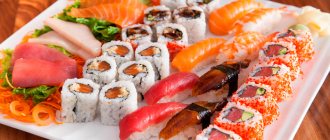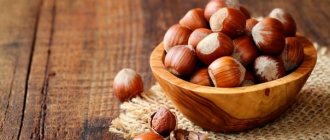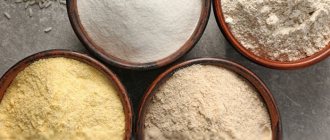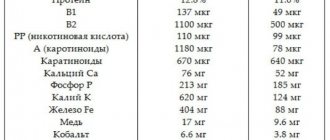Fresh trout
A raw carcass has from 95 to 110 kcal per 100 grams of weight. Like any animal product, there are no carbohydrates in it, but there is 19 g of protein and 2.3 g of fat. The composition of the chemical elements of the fresh product is rich and consists of the following components:
- vitamins A and K (fat soluble);
- the whole range of B vitamins;
- trace elements including Ca, Mg, Cu and Zn;
- essential fats such as omega-3 and omega-6;
- unsaturated acids: linoleic, linolenic, palmitoleic and arachidonic.
Important! These elements are necessary for the harmonious functioning of the human body. Doctors proved many years ago that in modern living conditions it is important for people to eat fish dishes at least twice every seven days. And trout is the most suitable option for obtaining essential nutrients.
Useful properties of trout
Valuable trout meat and caviar contain large amounts of animal protein, fat, vitamins (groups B, A, C, E, PP, D), mineral compounds (selenium, magnesium, phosphorus), amino acids, polyunsaturated acids Omega-3 and Omega-6 , which explains the wide range of beneficial properties:
- lowering blood cholesterol levels;
- stabilization of brain function;
- normalization of the nervous and cardiovascular system;
- stabilization of reproductive function in women and men;
- increased sperm motility;
- stimulation of metabolism;
- beneficial effect on the female body during menopause;
- stimulation of digestion;
- slowing down the aging process;
- preventing the formation of blood clots and plaques on the walls of blood vessels;
- stabilization of the liver and gastrointestinal tract;
- weight stabilization;
- improved vision;
- anticancer effect;
- powerful antioxidant effect;
- normalization of blood pressure;
- strengthening the immune system.
Lightly salted trout
Lightly salted fish has 186 kcal per 100 grams of weight. Its chemical composition contains elements as a percentage of the daily human consumption:
- vitamin B2 - 11.1% of daily intake;
- choline - 13%;
- vitamin B5 - 38.8%;
- vitamin B12 - 259.7%;
- vitamin D - 39%;
- vitamin E - 16.7%;
- vitamin PP - 50%;
- magnesium - 15%;
- phosphorus - 30.4%;
- iron - 13.9%;
- manganese - 42.6%;
- copper - 18.8%;
- selenium - 22.9%;
- chromium - 110%.
It’s easy to prepare lightly salted trout even at home:
- first of all, clean the fish carcass, and then separate the meat from the bones and backbone and rinse the fillet under running cold water;
- then we prepare a salty mixture of salt and sugar in proportions 2: 1. For a medium-sized fish, four tablespoons of salt and half as much sugar are required; pour as much of the pickling mixture into the prepared bowl as needed, place the trout fillet on it and sprinkle on top and sides;
- after 5-6 hours, turn the fish over and leave for the same amount of time; At the end of salting, remove the fish, rinse with cold water to remove any remaining salt and dry with napkins or paper towels.
Advice! If the fish suddenly tastes too salty, you need to soak it in cool water for several hours. After this, the fillet will become lightly salted and is perfect for sandwiches or snacks.
Trout
Trout is a salmon fish. There are certain difficulties in classifying species of this genus due to the proximity and diversity of trout species. For example, river trout is often considered identical to lake trout. The fact is that this fish is characterized by significant variability depending on the conditions in which it finds itself.
| The nutritional value | ||||||||||
| Amount per serving | ||||||||||
Trout lives in rivers and streams, mainly in mountainous areas, as it prefers clean waters rich in oxygen. This fish is considered the most valuable in nutrition due to the surprisingly delicate taste and ecological purity of its meat. The extreme sensitivity of trout to water purity is used to assess the quality of water purification. The fish are released to live in purified waters; if they are not cleaned properly, the trout dies. Trout is also bred in special valley reservoirs and fish farms in order to obtain valuable meat and caviar. Some species also thrive in seawater. This fish feeds mainly on animal food - larvae of various insects, worms, and fry of other fish. Adults can feed on small fish and frogs. The trout's body is flattened laterally, the muzzle is short, the color of the scales varies greatly - from olive-green on the back to greenish-yellow on the sides, with black and red or white spots surrounded by a bluish border. The abdomen is whitish-gray, sometimes with a copper sheen. In general, the color of trout can be darker or lighter depending on the color of the water and the bottom of the body of water in which it lives. Also, food and time of year affect its color, for example, during spawning, as well as in reservoirs with muddy or peaty bottoms, trout becomes darker. It is known that the more well-fed the trout, the fewer spots on its sides. When fish are moved from natural reservoirs to artificial ones, their color also changes. The size of an adult brook trout that has been raised in the wild depends on the size of the river where it was raised. On average, the length of the fish reaches 25 - 35 cm, weight 300 - 500 g. In artificial reservoirs, larger specimens can be grown, up to 1.5 - 2 kg. They reach this weight in 2 years of life. Sea trout are larger than river trout. |
Steamed trout
This steamed dietary dish is tastier than boiled fish and trout will have 125 calories per 100 grams of weight, which also contains 17 grams of protein and 6 grams of fat. To prepare it you need:
- clean the trout, divide into medium-sized pieces so that one is enough for a serving;
- Rub the prepared trout pieces with salt, pepper and spices and leave to marinate;
- add a liter of water to a double boiler or saucepan and bring to a boil;
- place portions of fish in a steamer bowl or on a special steaming stand in a saucepan;
- after 15–22 minutes, turn the pieces over and wait the same time until fully cooked;
- At the end of the process, place on plates and add a side dish, also cooked in a double boiler, boiled vegetables or salad.
How to cook and serve trout
Trout is a delicious variety of fish that simply cannot be spoiled by seasonings or aggressive marinade. When preparing trout, a little salt and fresh herbs are used, but no mayonnaise or vinegar.
Advice! To preserve the beneficial properties of delicious fish, it is baked. Boiled trout is not very tasty.
Trout goes well with the following ingredients:
- All types of citrus fruits.
- Sour cream.
- Ginger and rosemary.
- Olives and white wine marinade.
- Oddly enough, trout is also cooked with cranberries and kefir.
The most delicious trout is the one that is cooked in the first hours after fishing. And if you bake trout at home, you should use foil or parchment, otherwise the dish will turn out dry.
Important! A glass of dry white wine must be served with trout, which emphasizes the delicate taste and aroma of the fish.
Baked trout
This is a fragrant recipe and here the trout has a calorie content per 100 grams of weight of 170 kcal and also contains 22 grams of protein and 9 grams of fat. To bake a product you need to do the following:
- clean the trout, wash it, dry it and cut it into steaks, two cm thick or a little more;
- Sprinkle each portion of fish with lemon juice and salt, rub with a mixture of pepper and fish spices. Leave to marinate for half an hour;
- Grease a special dish (you can use foil) for the oven with vegetable fat and place portioned pieces of fish in it. If you want, you can put vegetables on top (onions, peppers, eggplant, etc.);
- First, preheat the oven to +180C, place the dishes with fish in it and cook for up to 40–50 minutes.
This dish can be eaten cold or hot. In general, there are a lot of ways to cook fish in foil.
Important! Watch the preparation carefully! In different ovens, due to the power of the oven, the cooking time may differ greatly from that stated in the recipe. Also, baked fish can be cooked whole, if the carcass is not large, less than two kilograms.
Fried trout
In this cooking method, fried fish absorbs some of the oil, due to which the fat content of the finished dish becomes greater. Therefore, the calorie content will already be 215 kcal per 100 grams of weight, and the protein content will be 19 g and fat 14 g. To prepare fried trout, this is the recipe:
- Clean the trout, rinse and dry. If the carcass is small, then it can even be fried whole; large fish should be cut into pieces;
- then marinate the fish for about an hour, pouring lemon juice on it and rubbing it with a mixture of salt and seasonings;
- heat the frying pan and pour a small amount of vegetable oil onto it; Dip fish pieces in flour on all sides and place in a frying pan;
- cook until golden brown, turning the pieces as needed; Cool portions and place on plates with a boiled side dish or salad. Fish can be eaten cold or hot.
Chemical elements in trout and their effect on the human body
Trout is beneficial not only because of its low calorie content, but also because it contains a lot of necessary and irreplaceable elements. The following have a beneficial effect on people's health:
- vitamin PP - corrects blood glucose levels, reduces bad cholesterol and therefore is a good method of therapy and prevention for high blood glucose, helps the heart and blood vessels function better, takes part in many chemical processes in the human body, therefore reducing the risk of diseases hearts;
- phosphorus - improves brain activity;
- chlorine - takes part in maintaining water balance and metabolism, in the secretion of gastric juice;
- sulfur - stimulates the growth of nails and hair and improves the skin;
- iron - simply vital for normal hemoglobin levels;
- zinc - increases immunity levels and helps brain function and memory;
- copper - promotes healthy skin and hair;
- selenium - removes free radicals from the body, inhibits the withering of the body, thanks to which the health and beauty of the body is maintained longer, and also inhibits the occurrence of malignant formations;
- manganese - strengthens the cardiovascular and nervous systems, participates in the production of hormones and improves immunity;
- iodine - vital for the functioning of the thyroid gland;
- chromium - promotes the elimination of fats and regulates insulin levels;
- fluoride - makes teeth strong;
- molybdenum - regulates blood glucose, destroys carcinogens, takes part in the processes of metabolism and synthesis of substances;
- Nickel - is part of cell DNA and increases metabolism; vitamins A and E are antioxidants;
- B vitamins - protect against stress and depression, help brain activity, regulate metabolism, strengthen the immune system and the condition of the skin, nails and hair;
- vitamin D - without which it is impossible to maintain healthy bones, cartilage and nerves; Omega-3 acid - preserves youth, prevents cancer, heals the heart and blood vessels, helps the human reproductive organs function well.
What are the benefits and how can trout be harmful?
Trout has a very good effect on brain activity, increases performance, reduces fatigue, improves memory and attention. This product is able to protect against the development of atherosclerosis, reduces nervousness and anxiety, fights stress, and has a preventive effect against the development of cancer. Eating this fish helps the body get rid of waste and toxins, correct blood pressure, and improve the general condition of diabetes and psoriasis. What makes trout a very popular product is its hypoallergenic nature. The special amount of KBJU makes this fish simply irreplaceable for people who are being treated for obesity or simply want to keep their body weight under control.
There is very little harm from trout, but several breeds of fish sometimes contain mercury, which can be dangerous for pregnant and breastfeeding women, so it is not advisable for them to eat a lot of it.
People who experience heavy physical activity may become deficient in energy and nutritional value due to the low calorie content of trout. Therefore, they need to combine this product with side dishes that are high in carbohydrates and calories and keep track of the BJU. And it’s best to bake or fry fish.
Important! Patients suffering from severe and chronic diseases of the gastrointestinal tract and internal organs (liver, kidneys) should definitely consult with their doctor about including trout and BJU in the diet, especially breeds with high fat content.
Benefits and harms of the product
Trout is not able to survive in polluted waters, and this indicates its safety for human life and health.
Delicacy fish has many useful qualities:
- activates brain activity, improves memory and thought processes;
- reduces the risk of formation of atherosclerotic plaques;
- tones the body, relieves the feeling of lethargy and exhaustion;
- normalizes the functioning of the nervous system;
- helps reduce blood cholesterol levels;
- stops the growth of tumors, acts as a preventive agent for cancer;
- regulates blood pressure in hypertension;
- improves stress and depression;
- has a positive effect on diabetes;
- strengthens the heart muscle;
- prevents the development of heart attack and stroke
- eliminates unpleasant symptoms of psoriasis;
- easily digestible, saturates the body with useful substances;
- has a beneficial effect on children's growing organism.
In addition, due to its low calorie content, red fish from the salmon family serves as an indispensable component of the diet when losing weight.
Those who want to get rid of extra pounds can add it to their nutritious diet without fear of gaining weight, while receiving a complex of valuable chemical elements.
Despite the fact that this is a practically safe food product, some points should be taken into account when consuming:
- improper or prolonged storage can spoil the quality of the product and cause harm to the body, therefore it is recommended to use fresh fish in the diet;
- river varieties require careful heat treatment, as they may contain parasites;
- When preparing trout for food, it is necessary to remove the head, due to the accumulation of harmful elements present in the habitat in this part of the product.
Selection and storage of trout
Fresh chilled trout should feel firm to the touch and the scales should be slippery. The fish's eyes will appear clear and not covered with a dull veil, and the gills will be a bright dark red hue. A fresh carcass should not have any unpleasant odors, even fishy ones. This product cannot be stored for a long time and is best prepared immediately. As a last resort, fresh fish can be stored in the refrigerator, but not longer than a day.
If you need to increase the shelf life of trout, it is better to freeze it. Then all its beneficial substances and taste characteristics will be preserved.
There are many breeds and varieties of trout. There is a difference in appearance, chemical composition and even in habitat (sea, river, stream, lake). If a person needs to increase efficiency and gain strength, then it is better to eat fatty sea trout. And when the goal is to lose weight, then nutritious river fish is best, especially steamed or boiled.
Advice! When eating sea fish, you must cut off the head, because all the harmful elements contained in the water where this fish lived are concentrated in it.
Trout is a fish of the highest category, because it is found mainly only in clean waters, due to which it has a reputation for being very environmentally beneficial and not polluted.
How to select and store trout
Fresh trout can be found in some regions, so the fish is sold either as a whole carcass or cut into fillets. Freshwater trout fillets are white and pink, while sea trout fillets are red. In addition, freshwater species are small, while marine species are very large.
The freshness and quality of fish can be determined by the following criteria:
- A dry, curled tail indicates an old fish. It was removed from the reservoir a few days ago, and had already become spoiled.
- Chilled fish looks like a living fish: moist eyes and tail, gills without mucus, bright scales.
- The smell of sea and river trout is not fishy. It smells like sea or water, but spoiled fish has a characteristic aroma.
- If the fillet is white and the veins are intensely pink or red, then the seller has treated the product with dye.
Advice! After bringing the fish, conduct a test by lowering the trout into the water. A fresh carcass will sink to the bottom, but a rotten one will float to the surface.
Fresh trout can be stored in the refrigerator for 1 to 3 days. But you can also freeze the fish by placing it in a tight bag or cling film, after cleaning the carcass and removing the head. Trout can be stored in the freezer for 2-3 weeks.











